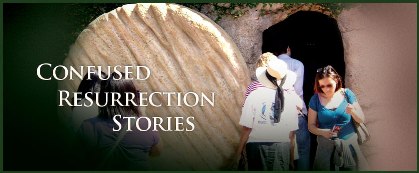R
Raafat
Guest
Hi
The other day I was reading about the evidence for crucifixion and resurrection of Jesus.
However I was astonished to find that the stories rely heavily on the New Testament narratives as there’s virtually no other source and they are very contradictory!
For example was Jesus crucified on Passover according to Synoptic gospels or on the day before it according to the gospel of John?
Did Mary Magdalene see an angel and the risen Jesus and tell the other disciples according to the gospel of Matthew or she didn’t meet anyone and ran back to the disciples to tell them that someone stole the body?
For further reading please read this:

The other day I was reading about the evidence for crucifixion and resurrection of Jesus.
However I was astonished to find that the stories rely heavily on the New Testament narratives as there’s virtually no other source and they are very contradictory!
For example was Jesus crucified on Passover according to Synoptic gospels or on the day before it according to the gospel of John?
Did Mary Magdalene see an angel and the risen Jesus and tell the other disciples according to the gospel of Matthew or she didn’t meet anyone and ran back to the disciples to tell them that someone stole the body?
For further reading please read this:

Did Jesus Rise from the Dead? What is the Evidence for the Resurrection? - Outreach Judaism
Question: Dear Rabbi Singer: I'm doing a project on missionary and counter-missionary groups. There is a very large section in my project that deals with theology. I have read your site as well as the Jews for Jesus site, and I must say that the information is both deep and extensive. I must...
outreachjudaism.org
